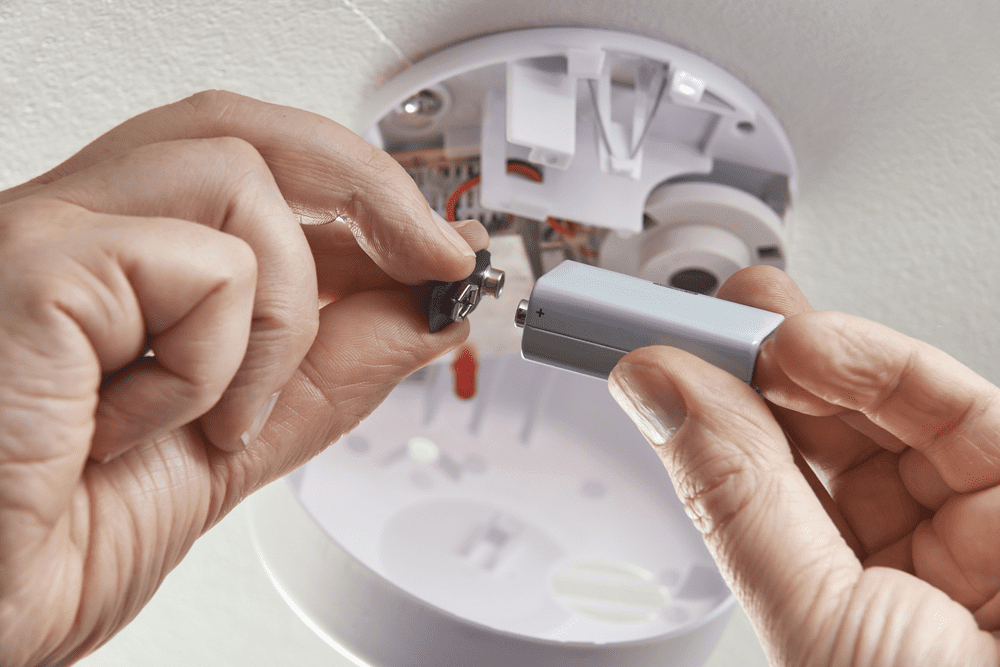
Considering that NSW witnesses around 6,500 annual domestic fires , it is only natural that the state has implemented stringent legislation regarding installing, testing, and maintaining smoke alarm systems in residential, commercial, and strata properties. Installing smoke alarms on your property is only part of the story. Smoke alarm upkeep is an ongoing process. Testing and maintaining the detection systems is essential to ensure they are working correctly, minimising the chances of false alarms and unresponsiveness.
Read this article to understand the smoke alarm testing and maintenance guidelines in NSW.
The National Construction Code (NCC) has different clauses on smoke alarms for buildings from Classes 1 to 9 , encompassing:
According to the Environmental Planning and Assessment Act 1979 and the Environmental Planning and Assessment Regulation 2000 , all buildings with sleeping areas should have at least one working smoke alarm on every level. The alarms should meet the minimum requirements of AS 3786:2014 .
Installation Requirements
Your smoke alarm installation is legal only when performed by a qualified and licensed electrician. The electrician will get the lay of the land and pinpoint suitable coordinates for effective detection and ample coverage.
Your electrician will fix the smoke alarm on the ceiling or at a decent height on a wall. The alarms cannot be near corners and obstructions. They should also be at a reasonable distance from windows, doors, and vents.
Fire and Rescue NSW advises that new or substantially renovated properties choose interconnected, hardwired smoke alarms with battery backup in case of a power failure.
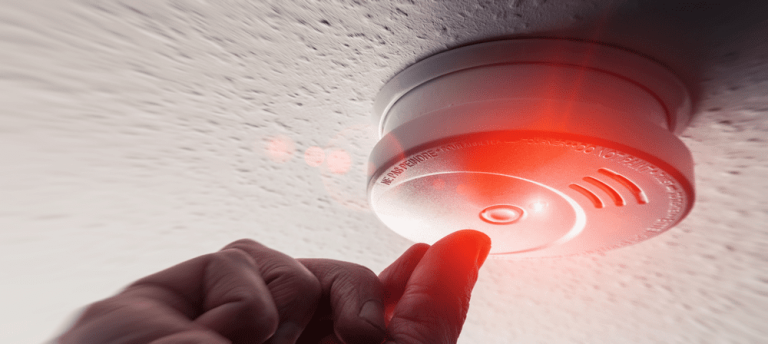
You will know whether your alarms are operational when you test your batteries regularly. Poorly placed or spent batteries will not alert occupants if a fire breaks out. Press the 'Test' button on your smoke alarm to test the batteries. If it emits a loud, piercing sound, the batteries are working.
If false alarms are becoming a regular nuisance or your smoke alarm performs poorly, it is probably due to dust accumulation. Dust particles obstruct the passage of smoke to the sensor.
Gently vacuum your smoke alarm with a soft, dry brush. Avoid cleaning it with liquids because you might get an electric shock. Do not use abrasive materials either because they can damage delicate components in the alarm. If you are nervous or uncertain about vacuuming your smoke alarm, dial a professional electrician who will clean it without the slightest damage.
The life expectancy of a smoke alarm's battery varies by manufacturer. If your battery is inching towards its expiry date, the alarm's performance will decline and eventually cease. Your electrician will pop the old batteries out and replace them with fresh ones, following the manufacturer's battery replacement guidelines.
Once in ten years, it is time to put your good and faithful smoke alarms to rest. Older smoke alarms that have run their course cannot hold a candle to newer models due to technological advancements as well as wear and tear. Your electrician will choose smoke alarms with lithium batteries for longer-lasting power. They will follow manufacturer instructions and legal best practices when installing new alarms and disposing of old ones.
Your electrician will confirm that your smoke alarm is working, but how? Don't worry. They will not need to get a fire going in your space. Electrical technology has some impressive methods to gauge your smoke alarm's responsiveness.
When you live in an apartment or a rented property, you might wonder who is responsible for ensuring the upkeep of the smoke alarm system. Take a look at the tasks incumbent on landlords, tenants, and the owners' corporation (for strata properties).
When your tenant brings smoke alarm issues to your notice, you must resolve the problem within two business days. You must hire electricians for the following services:
If you do not own the unit, report any concerns regarding the smoke alarm system to your landlord. If you own the unit, you are entirely responsible for engaging electricians for all tasks related to smoke detectors.
In strata buildings, the owners' corporation attends to the entire repertoire of smoke alarm tasks for shared spaces. They will engage an electrician or an electrical company to check on the following:
Throughout the testing and maintenance service, the electrician will maintain records of their activities, including service dates, tests performed, and issues addressed.

The importance of annual smoke alarm testing and regular maintenance cannot be underestimated. The whole purpose of your smoke alarm system is to warn you immediately so that you can protect yourself, your loved ones, your workforce, your tenants, your guests, or your property and possessions from unfortunate fire-related emergencies. Ku-ring-gai Electrical Service offers unrivalled smoke alarm maintenance services to homes, commercial establishments, and strata properties in NSW at honest and transparent prices. A lifetime workmanship guarantee backs all our work. Contact us today for a free quote and schedule a smoke alarm testing service for your property.
Of Australia's 17,000 annual domestic fires, 38.2% happen in NSW. Residential smoke alarm systems can keep the home's inhabitants and guests one step ahead of fire emergencies, averting damage to life and property.Having smoke alarms around the house solves just one part of the problem. The key to their effectiveness for your safety is strategic installation. Picking the ideal number of smoke alarms and fixing them in suitable locations ensures maximum coverage and sharp detection. Here is everything you need to know about domestic smoke alarm placement.
Let's acquaint you with the rules on smoke alarm installation.
Environmental Planning and Assessment Act 1979 (Clause 146A) & Environmental Planning and Assessment Regulation 2000 (Part 9, Division 7A). At least one functioning smoke alarm is compulsory on all floors of every building where people sleep.
AS 3786:2014. All installed smoke alarms must comply with the standards of AS 3786:2014.
If you fail to meet the-se legal requirements as a homeowner or a landlord, you will be held accountable for a violation. As a result, you will incur a penalty of up to $550 .
NSW homes come in all varieties, and all of them, from apartments to camper vans, legally require smoke alarms.
Stay on the right side of the law and err on the side of caution by outfitting your dwelling with high-quality smoke alarms.
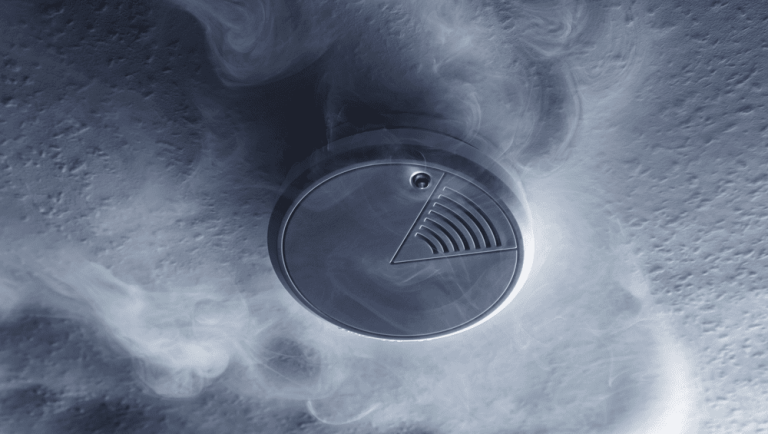
High-risk areas are those places in your home with a greater fire risk. As a rule of thumb, rooms with cooking appliances, fireplaces, space heaters, and other heat-producing devices or flammable materials are susceptible areas. To confirm that an area is high-risk, ask yourself these questions:
If you do not feel up to the task, a licensed electrician will assess the layout of your home and devise a smoke alarm installation strategy.
Don't let the cost of smoke alarm installation or the number of smoke alarms required give you second thoughts. There are higher prices to pay in the event of a fire. Solid reasons exist for equipping every room and level of your home with at least one smoke alarm.
Family members sleep and spend copious amounts of time in their bedrooms. If you are asleep, you may not be fully alert, which is why you need a smoke alarm to wake you up promptly. You might hate the alarm that wakes you up in the morning, but your smoke alarm is the alarm you will thank for getting you and your family out of bed, whether during your afternoon siesta or at three in the morning.
50% of the 1,230 winter fires attended by Fire + Rescue NSW originate in the kitchen, most due to unsupervised cooking. Open flames and cooking appliances make your kitchen a vulnerable area. Place a smoke alarm near your kitchen to detect cooking-related fires early. Minimising the distance of the alarm from the source reduces the chances of false alarms.
Installing smoke alarms on every level of your home is a critical life-saving measure. Fires escalate swiftly, and toxic smoke spreads even faster. These alarms provide early warnings, offering precious time for escape. Notably, Australian law mandates their placement on every level of the home. By safeguarding your loved ones and abiding by regulations, you ensure their safety without any room for compromise.
If your home has multiple bedrooms located along the same hallway, placing smoke alarms outside the bedrooms is essential. If the alarm detects smoke or fire in the hallway, everyone can snap awake and evacuate before the fire engulfs their bedrooms.
You spend a good deal of your waking hours in your living room—watching television, working, having family meetings, or entertaining guests. As a high-traffic area of your home, your living room deserves a dedicated smoke alarm.
Hallways are critical escape routes during domestic fire-related emergencies, especially if your house has many rooms or more than one storey. Hallway smoke detectors pick up on smoke and fire that may originate from any room or floor.
Malfunctioning and improperly maintained furnaces and water heaters pose serious fire hazards. Therefore, you should never skip installing smoke alarms in these utility areas.
You might question the logic of putting a smoke alarm in your basement because it is not a high-traffic area of your home. Be that as it may, these concealed spaces often contain electrical panels, heaters, and other fire hazards, making them top candidates for alarm installation.
Flammable materials, fuels, and vehicles make your garage a hotspot for fire emergencies. Like basements, garages are not the most conducive places for individuals and families to pass their time. Low traffic and occupation are ample reasons to outfit your garage with a smoke alarm, which will detect fire or fumes.
An alarm that does not go off when it should is dangerous, and an alarm that goes off when it should not is a nuisance. While there are certain low-risk maintenance activities you can perform yourself, others can be done only by a licensed electrician. When in doubt, contact a reputed electrical company for advice.
Interconnected smoke alarm systems communicate with one another wirelessly or through wiring connections. When one alarm detects smoke or fire, it dispatches a signal to trigger all interconnected alarms in your home simultaneously. Interconnected alarm systems do not give you information about the location of the fire; they only notify you that smoke or fire has been detected somewhere in the house.
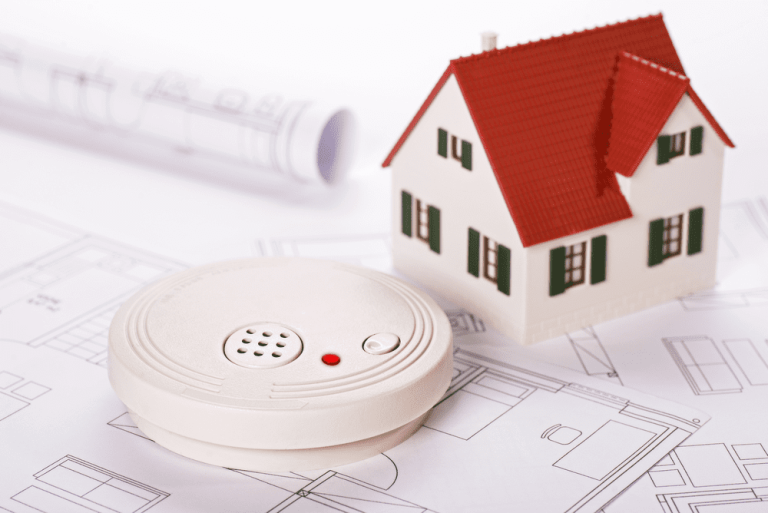
Residential fires in Australia claim more lives than natural disasters. The tragic part is that most of the fires and deaths were preventable. A smoke detection system is a simple but powerful precaution.Ku-ring-gai Electrical Service offers home photoelectric smoke alarm installation services in NSW at honest and transparent prices. Contact us today to make your home safer for you and your loved ones.
In a world where safety seems increasingly uncertain, it is vital to safeguard our homes against potential threats. With a rise in residential burglaries and home invasions, it's time to reconsider the traditional ways of home protection and venture into more effective and advanced solutions - home security systems. Our homes should be our safe havens, a place where we feel secure and comfortable. Hence, understanding the importance of home security systems is critical. These comprehensive setups offer more than just protection; they offer a strong line of defence that leaves you with a sense of calm. In this blog, we will delve into the effectiveness of these systems, examining their advantages, recent advancements, and how to choose a system that best suits your individual needs.
Home security systems guard our homes 24/7, ensuring the utmost safety. But what exactly are these systems, and how do they work? Let us unravel the concept and purpose behind these innovative setups, piece by piece.
Concept and Purpose
Home security systems are comprehensive networks of interconnected devices that work harmoniously to deter intruders and detect any unauthorised access. Their primary purpose is:
Components of a Comprehensive Home Security System
These watchful eyes capture footage of any activity within and around your property. From wireless home CCTV cameras that offer flexibility to wired cameras that ensure stability, they provide valuable visual evidence and act as a strong deterrent.
An intelligent sensor of this type detects movement in a certain area. Whenever something suspicious happens, they can activate alerts, activate lighting systems, or trigger surveillance cameras.
Imagine controlling your security system from your smartphone or synchronising it with other smart devices in your home. Smart home integration allows seamless automation, empowering you to monitor and control your security system remotely.
Understanding the specifics of these alarms helps you make informed decisions when protecting your home. Now that we have explored the types of smoke alarms and how they work let us move forward and look at the art of strategic placement.
Home security system components offer a plethora of features and benefits, including:
One of the most significant advantages of visible security cameras is their deterrent effect. When potential intruders see surveillance cameras, it acts as a strong deterrent, making them think twice before targeting your home. Criminals usually prefer low-risk environments, and the presence of a visible security system increases the chances of getting caught. The mere sight of cameras is enough to make an intruder reconsider and move on to an easier target.
Having a monitoring service in place ensures that your property is constantly being monitored, ready to respond to any alerts. This can be achieved through professional monitoring services or self-monitoring using mobile apps. In the event of an emergency, they can assess the situation quickly and contact the right people. Moreover, with round-the-clock monitoring, you can rest assured that your home is under constant surveillance, even when you are not there.
Many insurance companies offer discounts on homeowners' insurance premiums for having a reliable home security system. By making sure that your home is equipped with robust security measures, you could be eligible for lower insurance rates. This can result in long-term cost savings, making your home security system investment even more valuable. By understanding these components, their functions, and the benefits they bring, you can make informed decisions about the right combination of devices for your home security system.
One of the most valuable, yet elusive benefits of a home security system are its ability to give you peace of mind. Knowing that your home is equipped with reliable security measures offers a sense of calm and reassurance. Whether you are at work, on vacation, or simply dozing off at night, you can rest easy knowing your home is protected. This peace of mind extends beyond potential intrusions and includes protection against fire, carbon monoxide leaks, and other emergencies, depending on your security system features.
A remote access feature allows you to stay connected to your home security system from anywhere using your smartphone, tablet, or computer. Through a dedicated app or web portal, you can view live video feeds from your security cameras. You can also receive real-time alerts, activate, or deactivate the system, and control other smart home devices integrated with your security system. With this level of control and visibility, you can monitor the status of your home's security as well as make adjustments if necessary, making your life easier and more convenient.
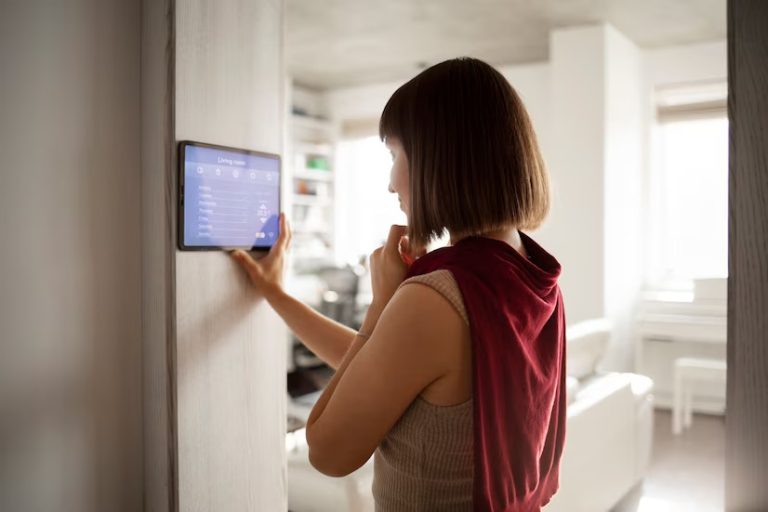
Welcome to the era of smart homes, where technology and security merge seamlessly to create a whole new world. Smart home integration takes home security systems to the next level, empowering homeowners with various intelligent features that enhance protection and convenience. Now it is time to dig deep into the concept and explore the remarkable benefits it brings.
However, if your kitchen has a separate dining area or is adjacent to other rooms, consider installing an alarm nearby to ensure comprehensive coverage.
Smart lighting systems automatically turn lights on and off, giving the illusion that someone is around. In this way, potential intruders are deterred from entering the house.
Smart door locks provide keyless entry and remote access control. You can lock and unlock your doors from anywhere, ensuring only authorised individuals can enter.
Smart surveillance systems provide real-time monitoring and notifications. With high-definition cameras and advanced features like facial recognition, you can keep a watchful eye on your property, even when you are away.
Smart home security solutions not only offer advanced defence mechanisms but also bring a whole new level of convenience to your fingertips. Let us explore the remarkable benefits that await you in this realm of interconnected possibilities.
Smart home technology and home security systems have merged to create a new era of convenience and protection. By embracing these advancements, you can strengthen your home's security and defences.
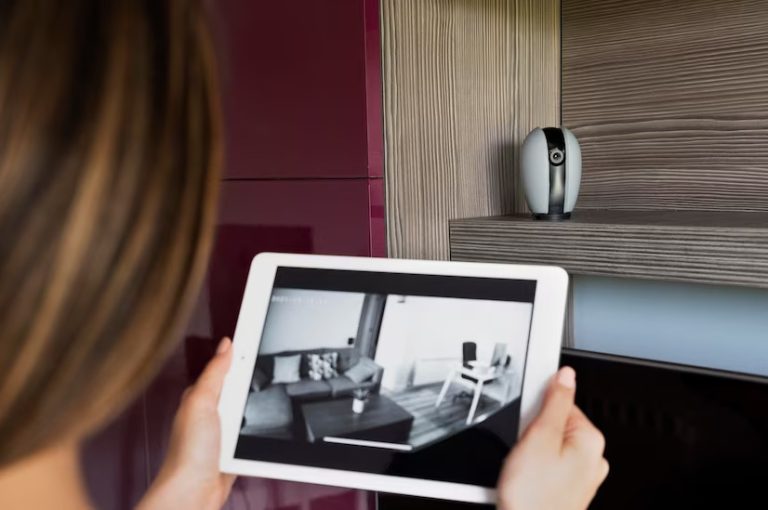
Effectiveness is key when it comes to home security. In this section, we will explore the key factors contributing to the effectiveness of home security systems. This will eventually help you make the right decisions that match your needs and budget.
A robust and reliable home security system is the foundation for a good security system. Look for systems with backup power options, such as battery backups or generators, to ensure uninterrupted service even during power outages.
The importance of quick response time in emergency situations is imperative. To minimise potential losses or damage, evaluate security systems with a quick and efficient response protocol. While evaluating response time, consider the system's efficiency and reliability of emergency services in your area. For faster response, some security systems offer optional features like panic buttons or direct communication with emergency services.
Selecting the ideal home security system can be overwhelming most of the time. With a variety of features and providers available, making the right choice can seem like a daunting task. Nonetheless, we have made things easy for you by listing out a few valuable tips to guide you in making the right choice.
If you anticipate future expansion or upgrades, choose a system that allows for scalability. Look for systems that offer add-on components and can seamlessly integrate with modern technologies as they emerge.
Identify your specific security requirements by considering factors such as property size, vulnerabilities, and personal preferences.
Consult a reputable security provider who can offer personalised recommendations based on your unique circumstances. We at Ku-ring-gai Electrical Service provide unique, customised, professional home security solutions. Reach out to us now for the most comprehensive professional home security solutions!
By understanding the factors contributing to effectiveness and considering individual needs and budgets, you can confidently make choices that provide optimal protection. Smart home technology and home security systems have merged to create a new era of convenience and protection. By embracing these advancements, you can strengthen your home's security and defences.
Overall, home security systems are not just a luxury but a necessity in today's world. They ensure our homes' safety. But remember, taking the first step is crucial. Safeguard your home by investing in a reliable and trustworthy home security system. Whether installing a security camera for your home, implementing wireless options, or integrating smart home features, take the necessary steps to strengthen your home security. If you need professional advice or assistance installing a top-notch home security system, do not hesitate to contact Ku-ring-gai Electrical Service. Our experienced team is ready to guide you and provide expertise to ensure your home is well-protected.Take control of your home's security by calling us today and feel secure knowing you have taken proactive measures to safeguard your house and your loved ones.
In a world where our homes and family members' safety are paramount, one unsung hero stands tall, ever reliant: the smoke alarm. These tiny devices can do wonders in terms of keeping our properties safe from fire hazards. As experienced service providers in the field, we understand the concerns behind their placement, installation, and maintenance.Do you feel anxious when leaving home, worried that your gas heater or electrical devices could cause an unexpected fire? Do not worry, everyone has been there at least once in their lives. In this comprehensive guide, we will explore the functionality of smoke alarms and the crucial role they play in preserving the most important things in life.
Smoke Alarms: The Ins and Outs
Have you ever wondered how these amazing smoke alarms detect smoke and respond to it? Let us try and understand the functionality of these in two simple steps!
Smoke alarms use photoelectric sensors to detect smoke. A light source emits a constant beam of light, and when smoke enters the alarm, it scatters the light, triggering the smoke detection mechanism. This allows for early detection of potential fire hazards and prompts appropriate action.
Once the smoke is detected, the smoke alarm switches into full alert mode. It activates a loud, attention-grabbing alarm sound, making sure that you and your loved ones are immediately notified of potential danger.
Understanding the specifics of these alarms helps you make informed decisions when protecting your home. Now that we have explored the types of smoke alarms and how they work let us move forward and look at the art of strategic placement.
General Guidelines: Safeguarding Every Corner of Your Home
Strategic positioning is crucial when it comes to smoke alarm placement. So, for that, let us look at the best places for installing them in various areas of your house. This will ensure comprehensive coverage and maximum safety for you and your loved ones.
It is a well-known fact that the kitchen is a hotspot for fire hazards. Furthermore, it is not easy to place a smoke alarm due to false alarms caused by cooking activity. So, to prevent that, it is recommended to place them at least 10 feet away from the cooking area.
During an emergency, hallways serve as escape routes. So, one can install smoke alarms in hallways, especially near bedrooms and common areas. As a result, these give occupants plenty of time to evacuate during fire outbreaks.
The bedroom is one of the most ideal places to install a smoke alarm. Place one in every bedroom of your house, providing a crucial line of defence as you sleep. In fact, smoke spreads quickly, and having an alarm within close proximity ensures early detection and allows swift response.
A living area is usually the heart of a home and deserves to be protected. Install smoke alarms in living areas, such as the living room or family room. These spaces are often the central gathering points for family and friends. And in case of a fire, these alarms act as proactive alerts, issuing timely warnings to ensure safety.
However, if your kitchen has a separate dining area or is adjacent to other rooms, consider installing an alarm nearby to ensure comprehensive coverage.
Now that we have covered the general guidelines let us explore some practical do's and don'ts to ensure your smoke alarms are effectively positioned. Here is what you need to know:
By following these placement guidelines and avoiding the most common mistakes, you will be able to create a comprehensive network of smoke alarms that will form a protective shield around your home.
A Step-by-Step Installation Guide
Here is a step-by-step guide to ensure your smoke alarms are correctly mounted, wired, and tested to ensure peak performance.
Common Installation Mistakes: Pitfalls to Avoid
While the installation process may seem straightforward, there are common mistakes that could affect smoke alarm’s effectiveness. By being aware of these pitfalls, you can ensure a seamless installation experience.

Keeping Your Smoke Alarms in Peak Condition: The Importance of Regular Maintenance
Just like any other device, smoke alarms require regular maintenance to keep them in top-notch condition. By dedicating some time and attention, you can ensure their reliability and longevity. So let us find out how to take care of them.
Identify potential problems by performing routine checks. Ensure that there are no signs of physical damage or discoloured smoke sensors on the alarms. Apart from that, address any issues honestly and seek professional help if needed.
The heartbeat of your smoke alarm lies in its battery. Therefore, replace the batteries at least once a year, or as recommended by the manufacturer. Additionally, consider using long-lasting lithium batteries for extended performance.
Over time, dust and debris can accumulate, making smoke alarms less effective. So, make sure to clean the exterior and interior of the alarm using a soft brush or vacuum cleaner attachment to remove any obstructions.
However, if your kitchen has a separate dining area or is adjacent to other rooms, consider installing an alarm nearby to ensure comprehensive coverage.
Reducing Unwanted Beeps: How to Troubleshoot False Alarms
Smoke alarms beeping for no reason can be frustrating, but understanding their causes and implementing the solutions can help resolve the cause. Here are some troubleshooting tips to reduce the unwanted smoke alarm beeping:
If false alarms occur frequently in a specific area, consider relocating the smoke alarm slightly farther away to reduce unnecessary triggers.
If false alarms persist despite troubleshooting efforts, consult a qualified electrician or certified installer to assess and resolve the issue.
Determine the source of the false alarm. It could be steam from hot showers, cooking fumes, or excessive dust. Addressing the root cause can minimise false alarms.
By implementing regular maintenance, conducting routine tests, and effectively managing false alarms, you will ensure that your smoke alarms remain an important part of your home's alarm system.
The importance of smoke alarm placement, installation, and maintenance cannot be overstated. These small devices serve as protective guardians, safeguarding our homes and loved ones from fire's devastating consequences. By following the guidelines discussed in this blog, you can make your home a safer living space. Remember, it is not enough to just install them. Their maintenance, including cleaning, replacing batteries, and testing ensures optimal performance. By dedicating a small amount of time and attention, you can ensure that they are always functional in case of an emergency. At Ku-ring-gai Electrical Service, we understand the importance of fire safety and are committed to serving our community. With our expertise in smoke alarm placement, installation, and maintenance, we provide reliable and professional services. Our team is dedicated to safeguarding your well-being, and what matters most to you. Contact us today to talk to one of our friendly electricians to discuss your smoke alarm needs. We would love to help you keep your home safe! Call us at 0418 442 578 !
Shorter daylight hours means more time with the lights on. The right lighting in your kids’ study areas and/or your home office makes working easier and more comfortable. Importantly, it also helps to minimise the risk of eye strain.
Here are 5 tips to shed the right light in your home office or kids’ study area.
For information and advice about home and office lighting, call us on 0418 442 578 or email info@kuring.com.au.